Prospects the Padres Must Protect from Rule 5 Selection
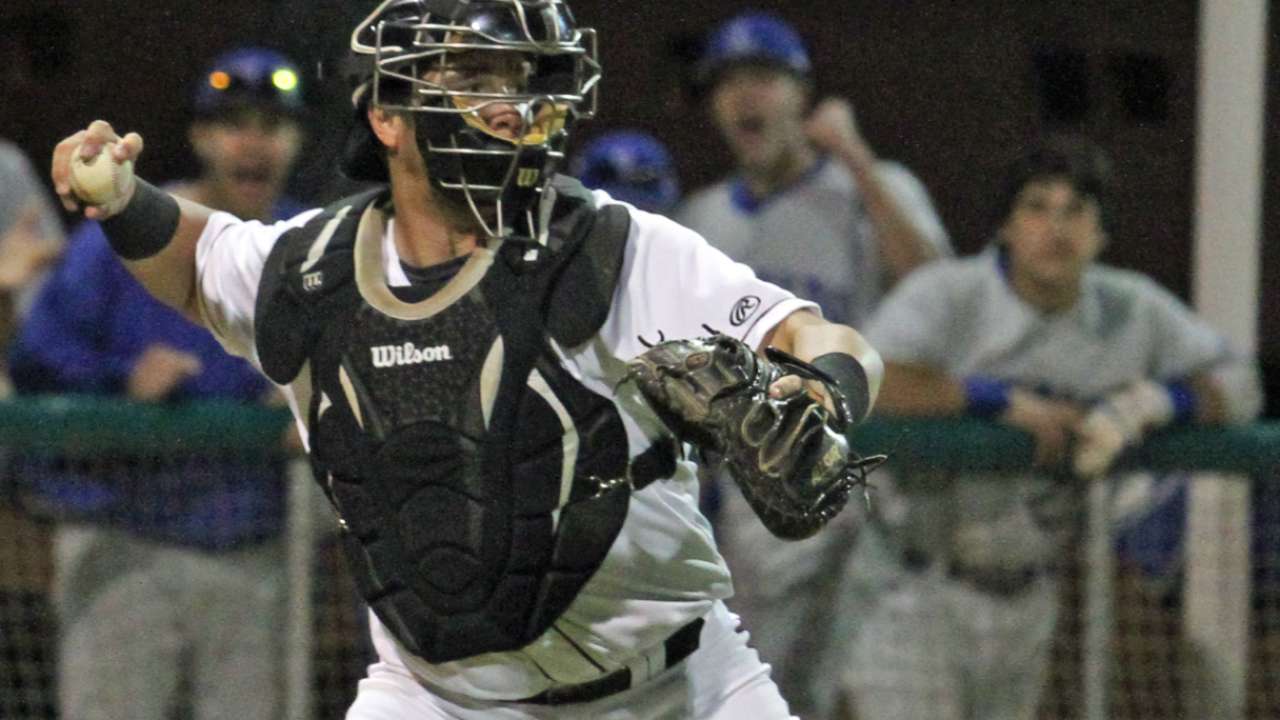
Credit: MiLB
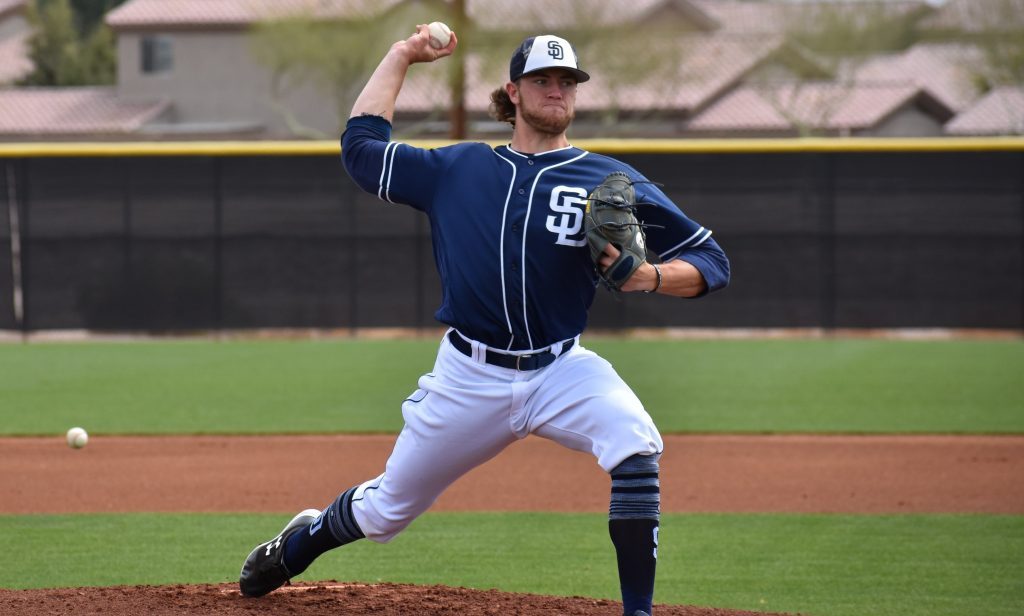
In the next few weeks, the San Diego Padres will need to protect certain prospects from being selected in the upcoming Rule 5 draft. Here is a look at a few names that need to be added to the 40-man roster by the Friars.
The next great Padres’ team will be built on the strength of homegrown talent.
In the last few months, we have seen the spectacular value prospects bring. With adjustments, Hunter Renfroe and Franmil Reyes have become offensive studs. They could use some work on defense, but both players have the power potential to anchor San Diego’s lineup for the foreseeable future.
In addition, fresh rookies like Luis Urias and Francisco Mejia have shown the ability to be great regulars, albeit showing their skills in a very small sample size. On the way are even more electrifying prospects, including possible superstars in Fernando Tatis Jr. and Chris Paddack. In other words, Padres General Manager AJ Preller has done a phenomenal job accumulating quality minor league talent.
Unfortunately, however, Preller has stockpiled too much talent for the team to keep.
On December 14, several other clubs across the league will be looking at the Padres’ number one farm system with the intention to steal some solid prospects from them in the Rule 5 draft. Thus, it is up to the Padres’ front office to hold on to the most valuable contributors and secure the city’s future in terms of baseball. This will undoubtedly be a difficult process where each prospect at risk will be evaluated closely.
The prospects that Preller should protect are:
Chris Paddack
The 22-year-old Paddack is an obvious choice to protect. He absolutely dominated minor league hitters and did so barely a year after undergoing Tommy John surgery. Usually, the operation takes some bite out of a pitcher’s arsenal, as it did to Cal Quantrill, but amazingly, Paddack came back even stronger. His 2.10 overall ERA and 1.91 ERA in San Antonio conservatively indicates a possible #2 starter. The 120 K’s he delivered over 90 innings even suggests ace-hood. This expectation must be tempered at the moment, however, as the Texas A&M product’s strikeout rate dropped from 14.27 to 8.84 upon promotion. Thus, it would not be outlandish for Paddack’s K/9 ratio to further decline when he ascends to El Paso.
Yet, there is ample enough reason to believe the righty will become one of the best Padres starters in over a decade. While his strikeout ability declined when more advanced batters stepped into the box, his control remained unbelievable. He continued to walk fewer than a batter per nine, a figure that is extremely rare to find among today’s high octane pitchers. Also, his ERA and FIP statistics were consistently in the low twos. The 2.31 fielding independent of pitching mark Paddack possessed in Double-A is more representative of his raw talent than his lower ERA, especially since he had a lucky BABIP of .237. Anything close to a 2.31 earned run average in the majors would make Paddack a star. Thus, San Diego’s front office would have to be insanely stupid to not protect him during the winter meetings.
Anderson Espinoza
On the surface, Anderson Espinoza is a questionable player to keep because he hasn’t stepped on a mound since 2016. He suffered through forearm tightness before the 2017 season began and underwent Tommy John surgery in August of the same year. While post-surgery performance records have gotten better in recent years, there is still some risk involved. As such, how Espinoza will do in 2019 and onward is questionable. Yet, his track record and future potential are so immense that it would be foolish to risk his status as a member of the Padres.
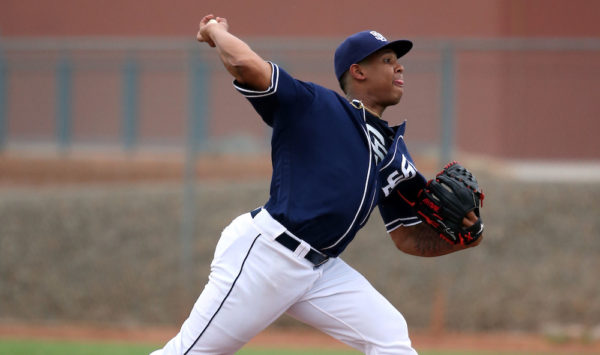
Before going down to injuries, the young Venezuelan was a perennial all-star in the making. His fastball, curveball, and changeup were all above-average offerings and his control was also excellent. Armed with these tools, Espinoza garnered Pedro Martinez comparisons, a lofty connection Padres’ supporters could dream on. Fans in Fort Wayne had the pleasure to witness some of Espinoza’s talent already. He seemed to be underperforming when he was first acquired from the Boston Red Sox in the Drew Pomeranz trade. At least that’s what the 4.73 ERA in eight games, seven started, for the TinCaps appeared to indicate. Advanced metrics, however, show that the 18-year-old was excelling. His FIP was 3.17 and his xFIP (league adjusted FIP) was 3.53. Both were solid marks, but were more impressive when acknowledging how the righty sustained an unfortunate .363 BABIP. In other words, he was much better than his ERA had shown. In fact, there was a reason for optimism. Based on the underlying rates, as well as a 2.23 BB/9, it wouldn’t have been surprising to see the kid post successive low three or even two ERAs campaigns. His numbers and stuff suggested a promising career as a front-line starter.
While injury makes Espinoza’s future a question mark, his raw talent and prior performance are too great to gamble with. If he’s not put on the 40-man roster, then another team will surely scoop him up, stash him in their bullpen, allowing him to develop, and watch him turn into a star. In short, this hurler is not a Rule 5 option.
Just when San Diego didn’t need another good catching option, Austin Allen starts fighting hard to prove that he has a role in the city’s future. Drafted in 2015 as a fourth-round pick, Allen has done nothing but rake. His latest stop in San Antonio had to be a career year. In 451 at-bats, he smashed 22 home runs, totaled 31 doubles, and delivered a great batting line of .290/.351/.857. When the Padres first grabbed him, they expected an average offensive producer, but they certainly didn’t imagine the Florida Tech alum be a well-rounded one. Now, he may have more potential with the bat than either highly touted Padres catchers. Also, there’s nothing in his underlying stats which indicate that 2018 was a fluke. He’s just proving that his offense can be trusted as consistent.
Defensively, Allen has become much more reliable. Over the 2017-2018 offseason, the prospect focused intensely on slimming down and becoming more flexible. As a result, his ability to stay behind the plate improved. He exhibited a caught stealing rate jump from 21% to 33% as a well as a decrease in passed balls allowed, six down to three, over a longer course of playing. This bodes well for his future, especially if he can keep making progress against tougher competition. The possibility of Allen being forced out of the crouch in the majors is an idea of the past. His reputation as only an offensive catcher is changing, and he has a chance at stealing time from Hedges and Mejia.
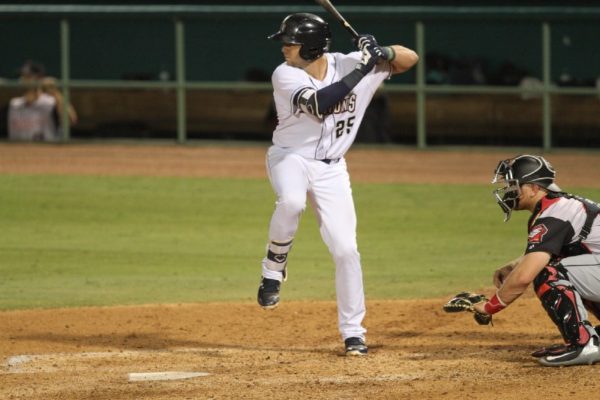
Thus, as a valuable contributor on both sides of the ball, Allen must be protected. Even though the Padres have two current catchers to build on, having a third is not a bad idea. If San Diego has to, then there should be a future roster comprised of three catchers. We’ve carried four in a recent season so why not three? The idea is not so outlandish, especially when they are all projectable players, with one, Mejia, potentially being a utility man. It is essential to keep the mighty stick of Allen rather than sacrifice him for roster space.
Many evaluators don’t agree that the Padres need to add Ty France to the 40-man roster. They see him more as a future bench piece than a useful contributor. It’s hard to argue when the third baseman was drafted in the 34th round, 1017th overall, in 2015 and possessed less power than even average third basemen. The only positive of his game was how he racked up a quality batting average and on-base percentage between 2015 and 2017. Last season’s triple slash line of .275/.341/.718 in San Antonio was representative of the kind of player he was. Those figures and the meager five round-trippers he had over 402 plate appearances were disappointing to see in a corner player. Without improvement, there would be no reason to view France as part of the future. Thankfully, for him, 2018 occurred.
In 2018, Ty France was an absolute beast at the plate. He hit 22 home runs and drove in 96 runs, 38 more than in any other season, while posting roughly the same slash line as before. These are extremely pleasant surprises from a local athlete drafted in the final rounds. They are far greater than ever expected and easy to dream of when thinking about the Padres’ future infield. If the SDSU alum can continue to perform defensively, as suggested by the fact that management has yet to consider a long-term position change, then there is no doubting the value Ty France can bring. He could be the first legitimately good third baseman, instead of extremely fluky like Chase Headley, San Diego has had since Kevin Kouzmanoff enjoyed three successful campaigns from 2007-2009. In fact, he has the ability to be better given that he possessed a solid 138 wRC+ in his most recent stop, Triple-A El Paso. Also, he continuously improves on offense. For example, his approach and patience are much better since trading in his Aztecs’ uniform for professional apparel. Two years ago as a member of the Lake Elsinore Storm, he posted a minute 5.9% walk rate and decent 18.4% strikeout rate, but as an El Paso Chihuahua this year, he carried an excellent 11.8% BB and 17.3% K. These alone are terrific stats for an emerging power hitter, but if he can improve further like he’s shown the ability to, then the Padres may have a dominant offensive third baseman soon.
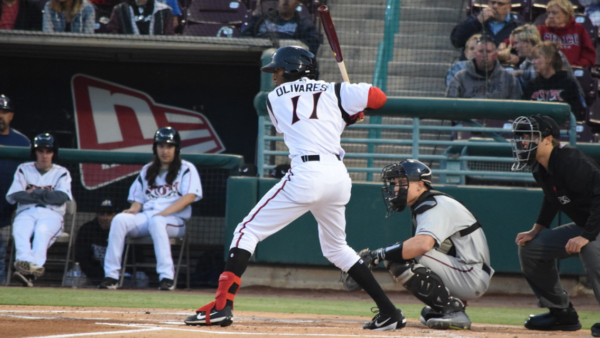
Besides France’s performance, however, there are other factors to consider why Preller must keep him. San Diego does not have a guaranteed long-term answer at the hot corner. Wil Myers has the offensive potential and maybe the defensive tools, given a full offseason of practice, but gets injured too often to be relied on. Also, while prospect Hudson Potts is a highly intriguing third baseman, he’s less of a certainty than France. It would be foolish then to not keep France for insurance purposes. Lastly, it would be an amazing sight to see a local SDSU athlete play an important part in the ascension of San Diego baseball.
Edward Olivares (maybe)
Depending on how many spots are opened up on the 40-man roster, Edward Olivares should be protected. The former Blue Jays prospect is a talented outfielder and could possibly be able to contribute as a five-tool player. He has the track record of a future above-average regular, but his role is in jeopardy for several reasons. One, he didn’t excel as much as fans hoped. A 100 wRC+ in High-A ball is not going to wow supporters who love him for his offensive potential. Neither will his inability to reach base at an above-average clip. Offensively, hitting 12 home runs and 21 stolen bases are interesting, but less so if they are associated with empty offensive metrics. Another thing working against Olivares is the roster crunch occurring in the Padres’ outfield. The team already has a five-tool performer in Franchy Cordero as well as great power threats in Hunter Renfroe and Franmil Reyes. Also, Preller has younger high-rising outfield prospects in Tirso Ornelas and Jeisson Rosario. Both show more promise at age 18 than Olivares does at 22, 23 by next season, and still waiting for a promotion to Double-A. In short, while Edward Olivares is a possible stud in development, he may be a victim of roster crunching.
The 2018 offseason will definitely be different from prior ones. For the first time during his career, Preller has to worry about protecting prospects from other clubs. He has many to keep too, thus it is important for him to tread carefully. Otherwise, the guys he doesn’t keep may become stars for other teams.
I write, I write, and then I write some more.. Lifelong Padres & Chargers fan who is tired of the acceptance of losing that grips all of San Diego sports fans!
Thanks man. I love hearing from other fans.
I’m pulling for Ty France to be added. I think you got the rest correct.